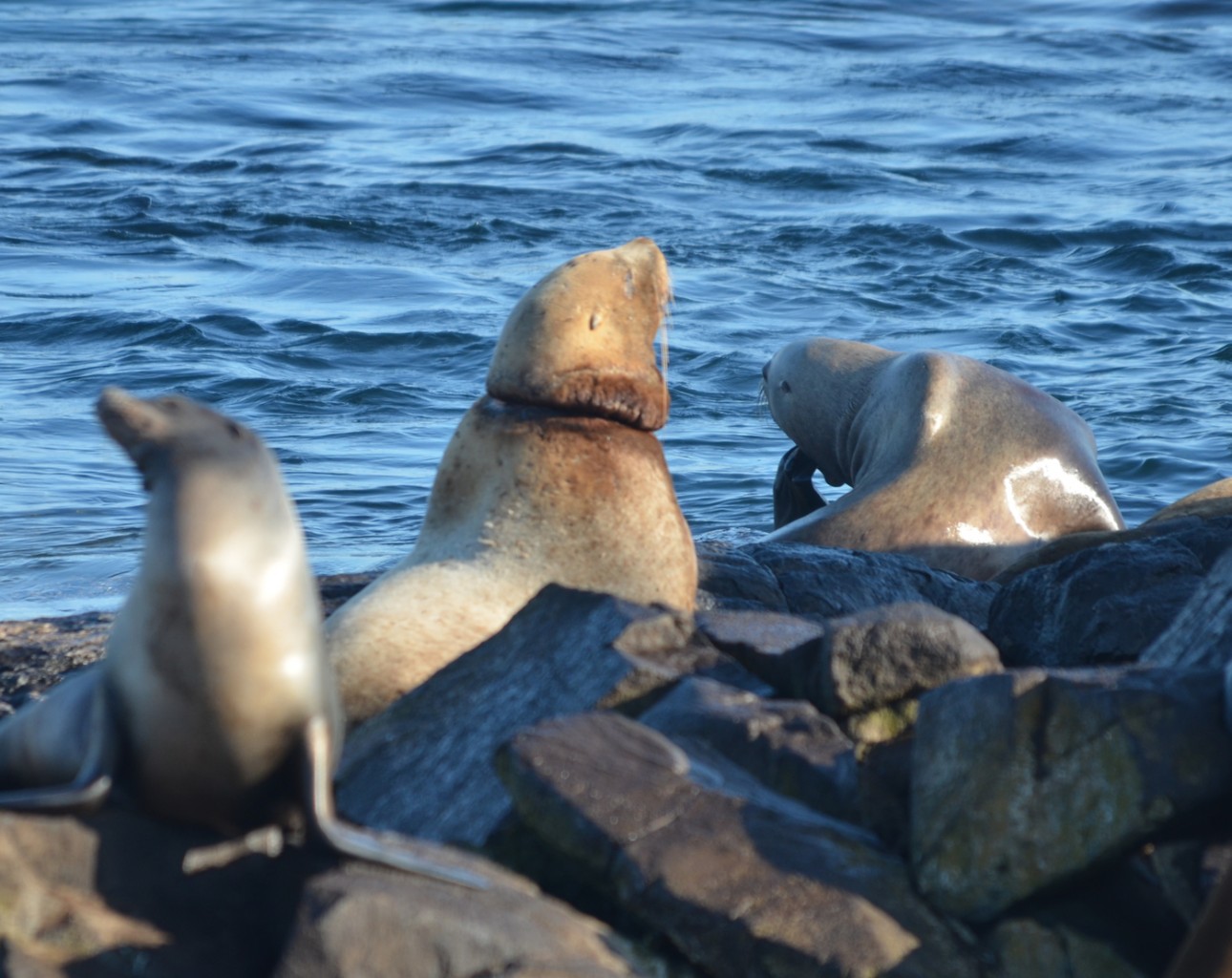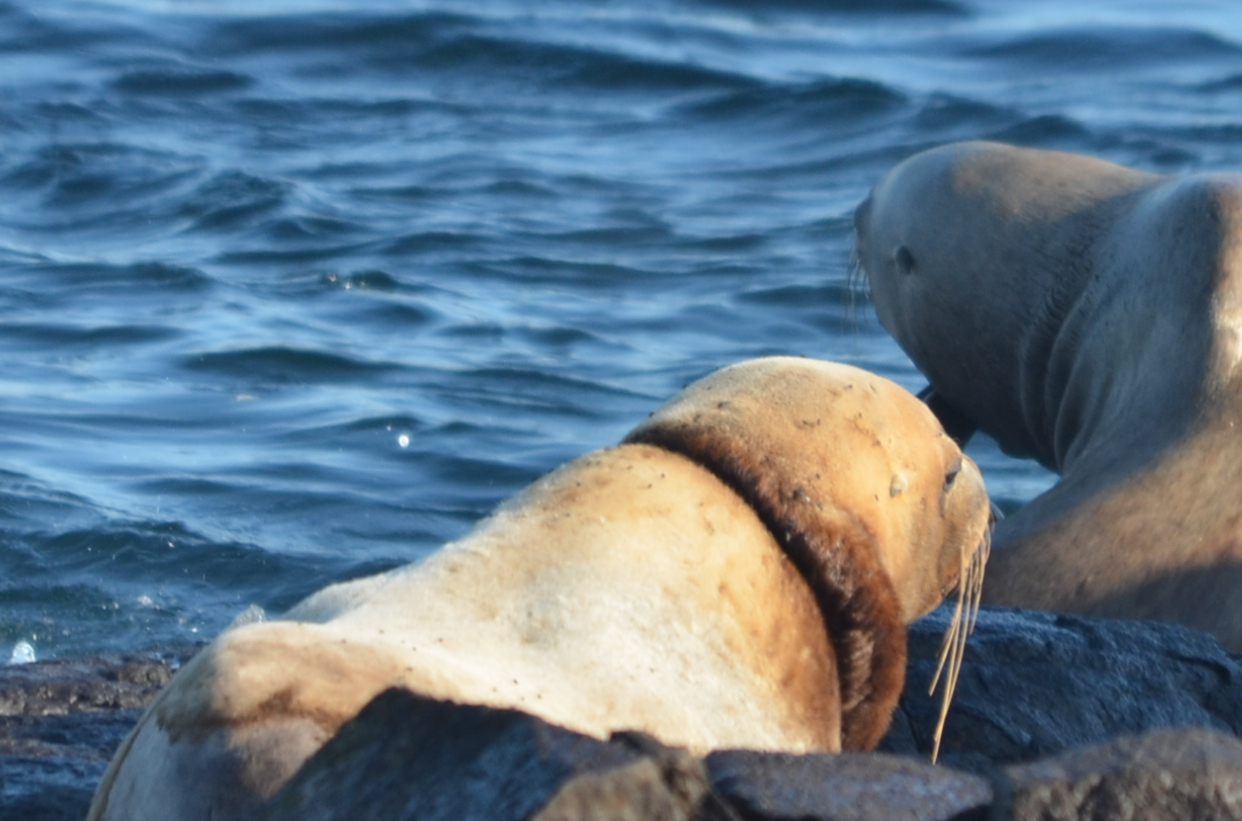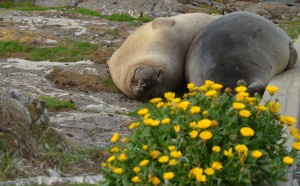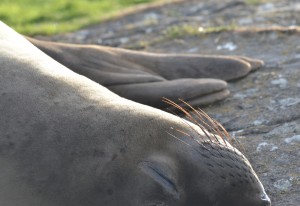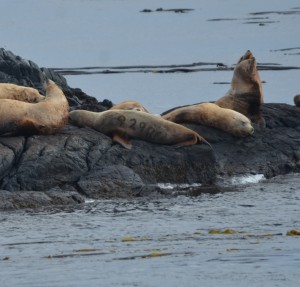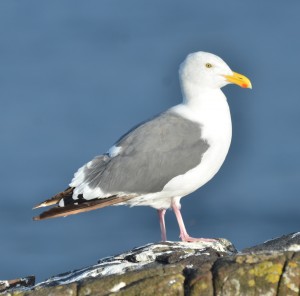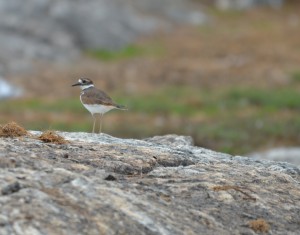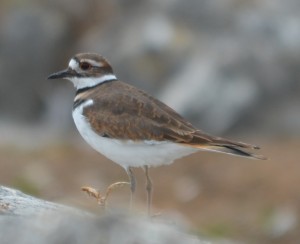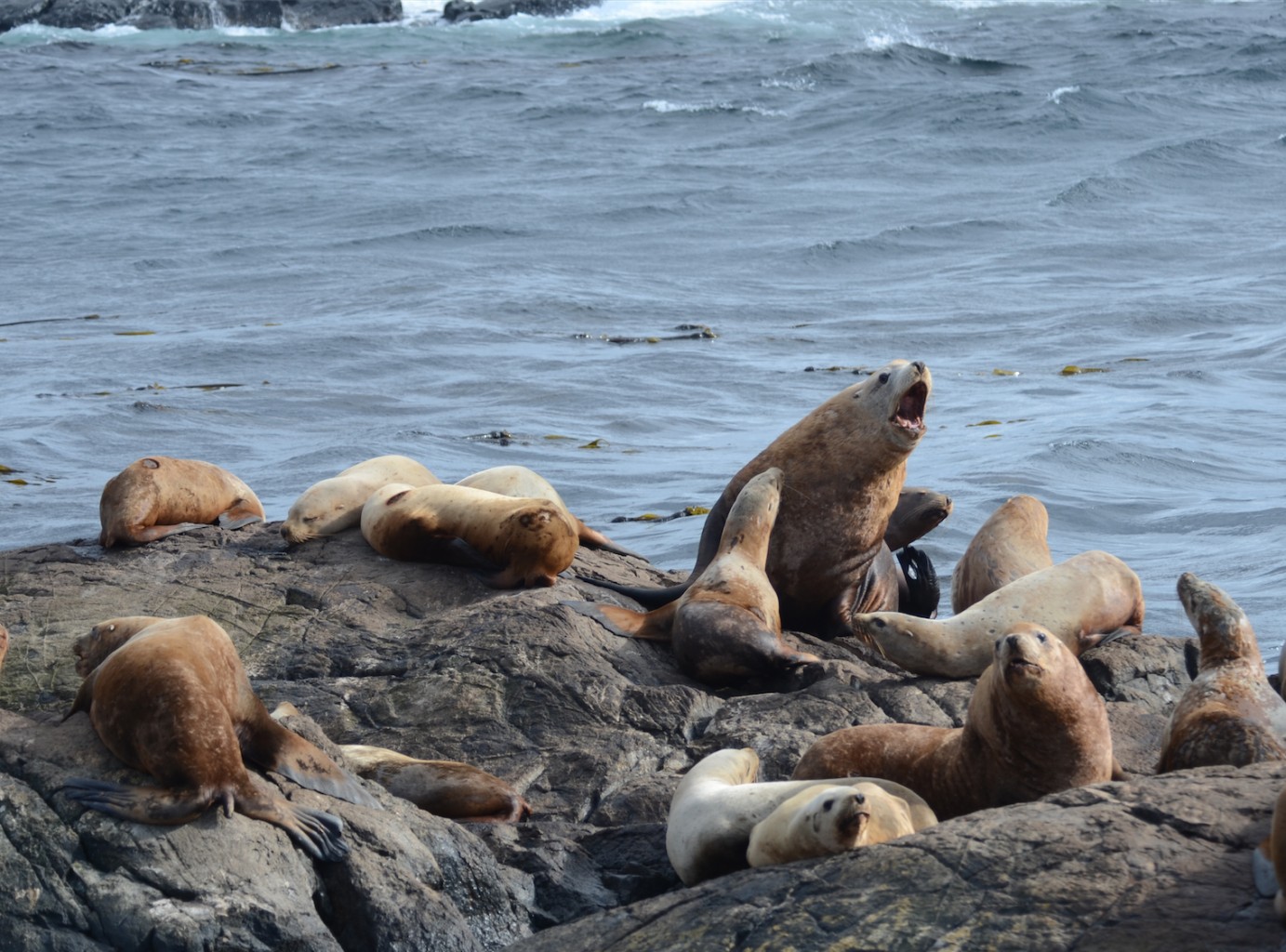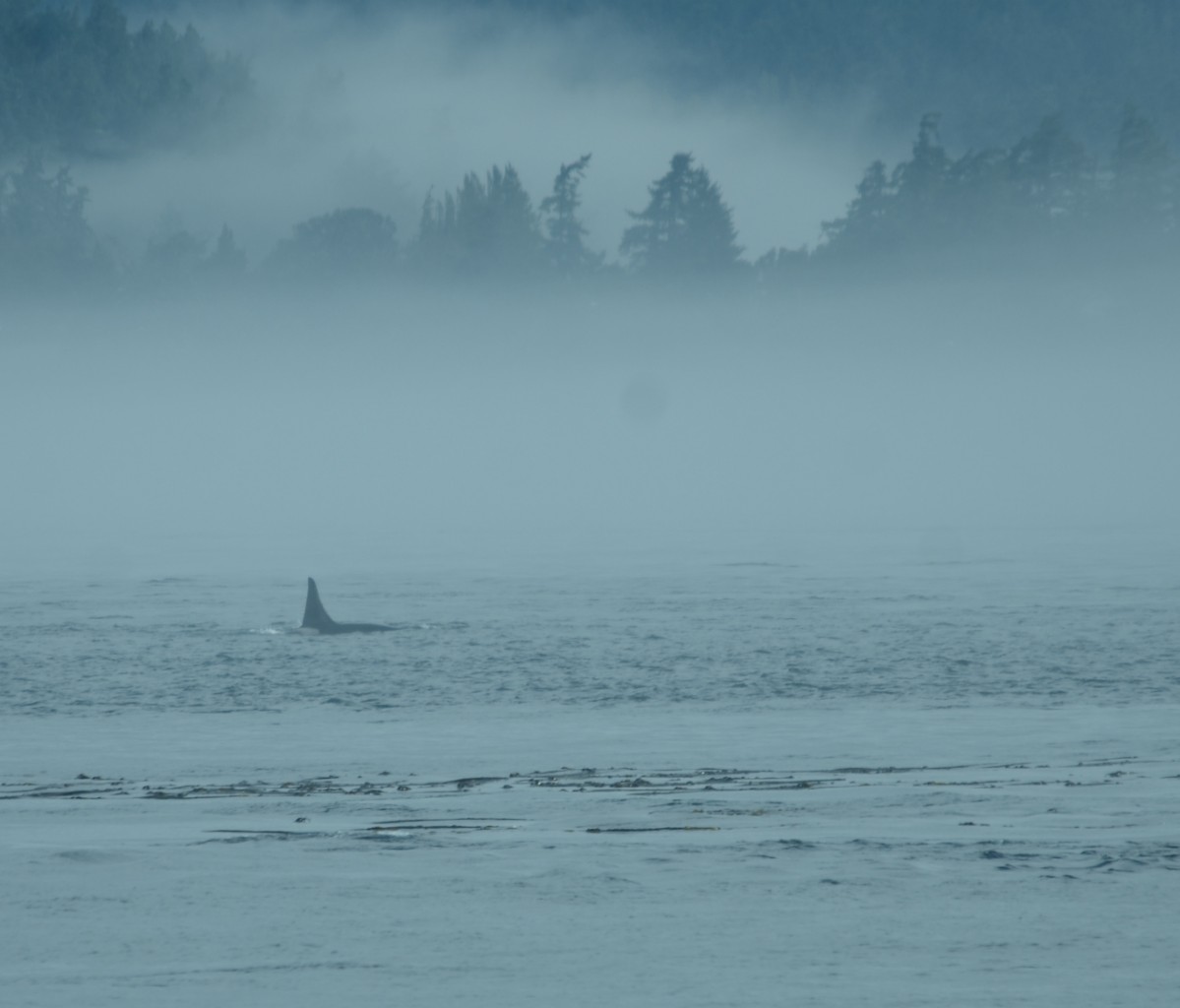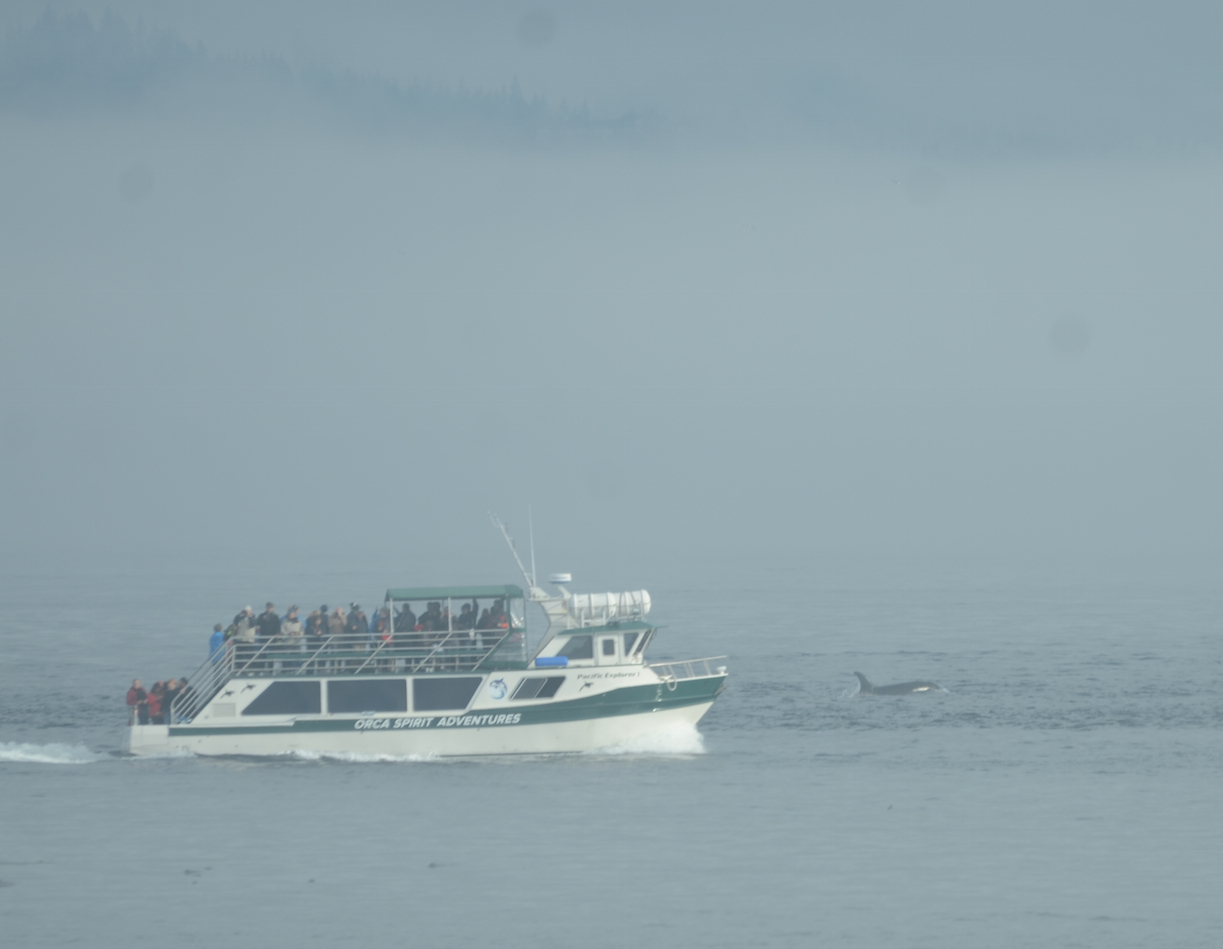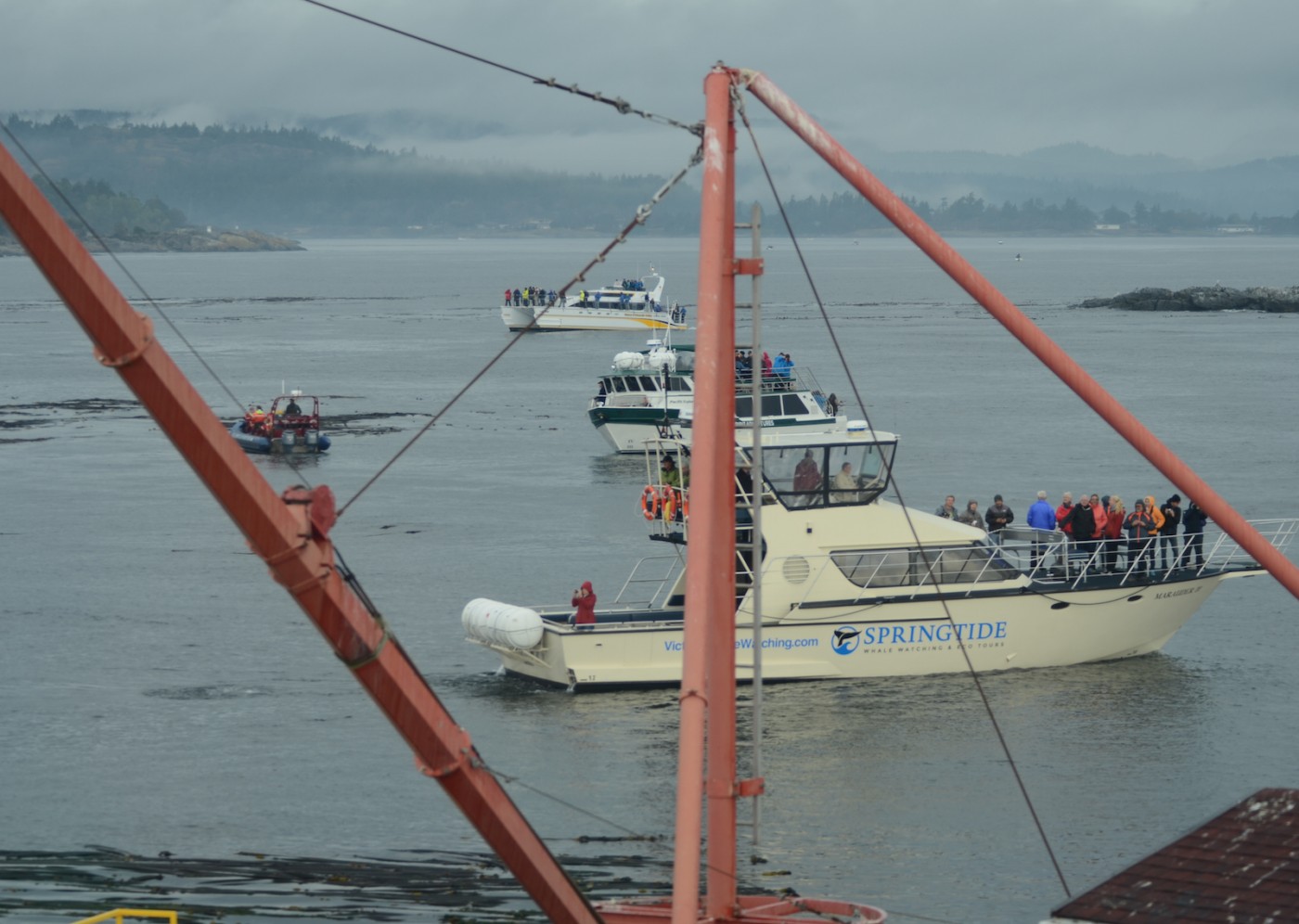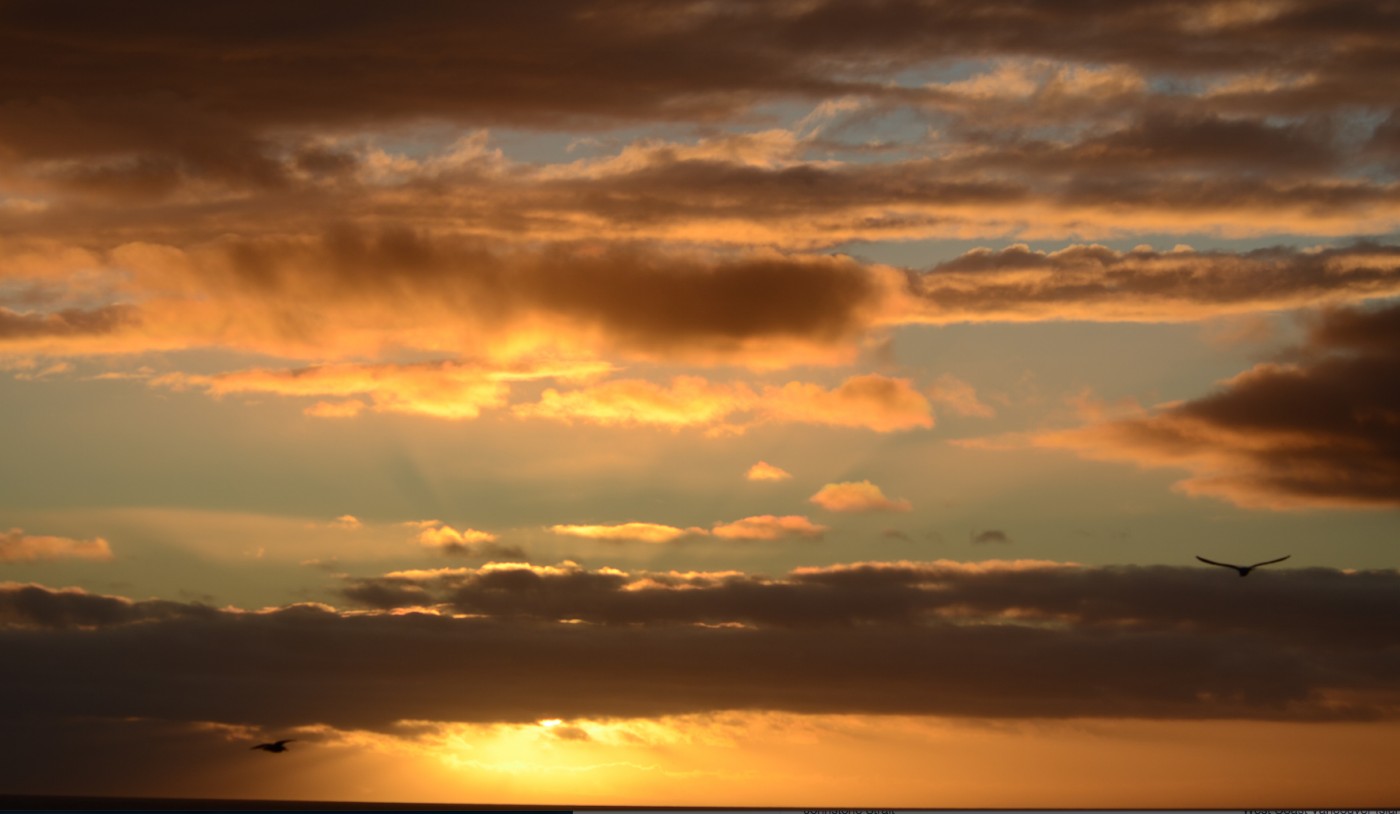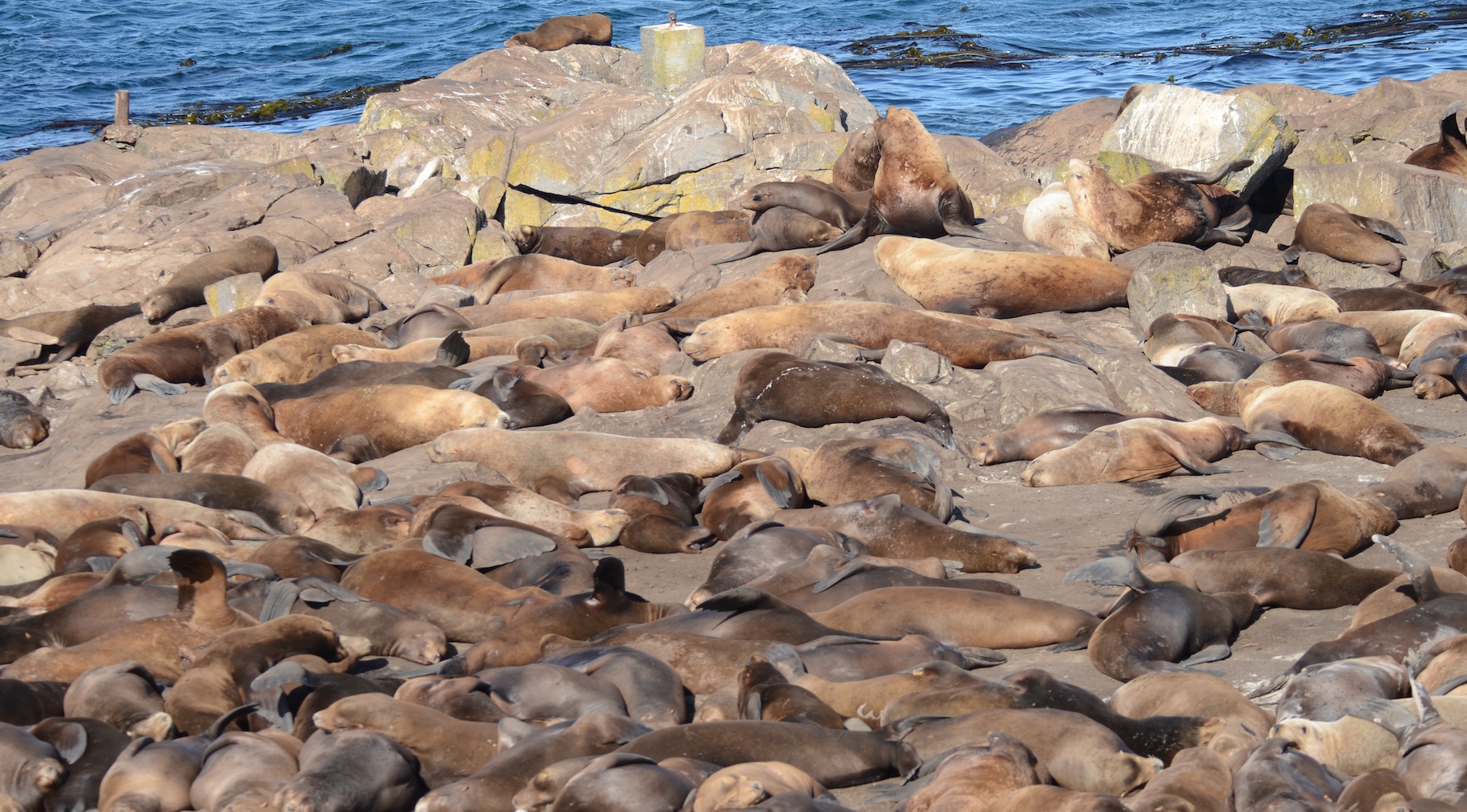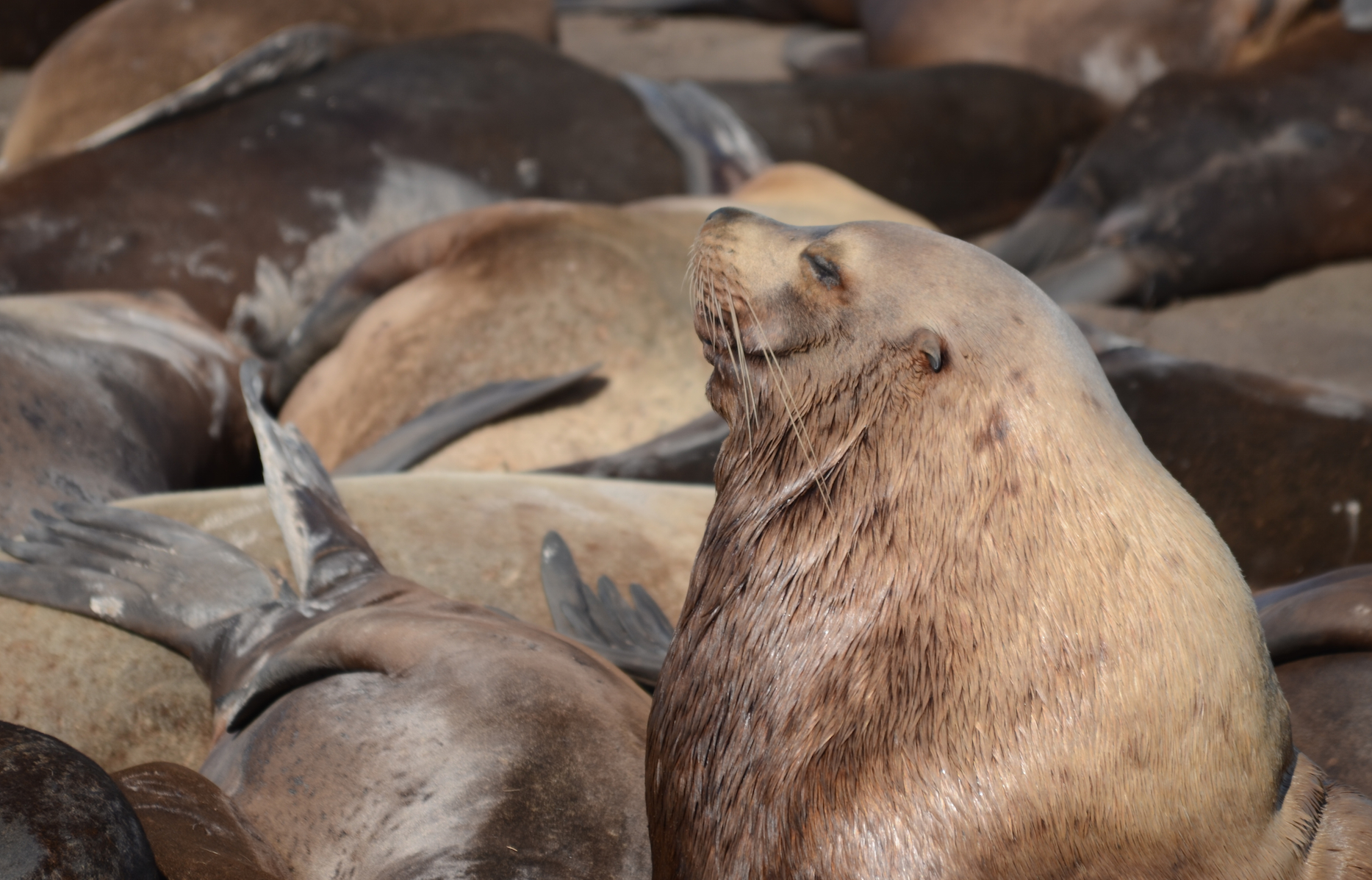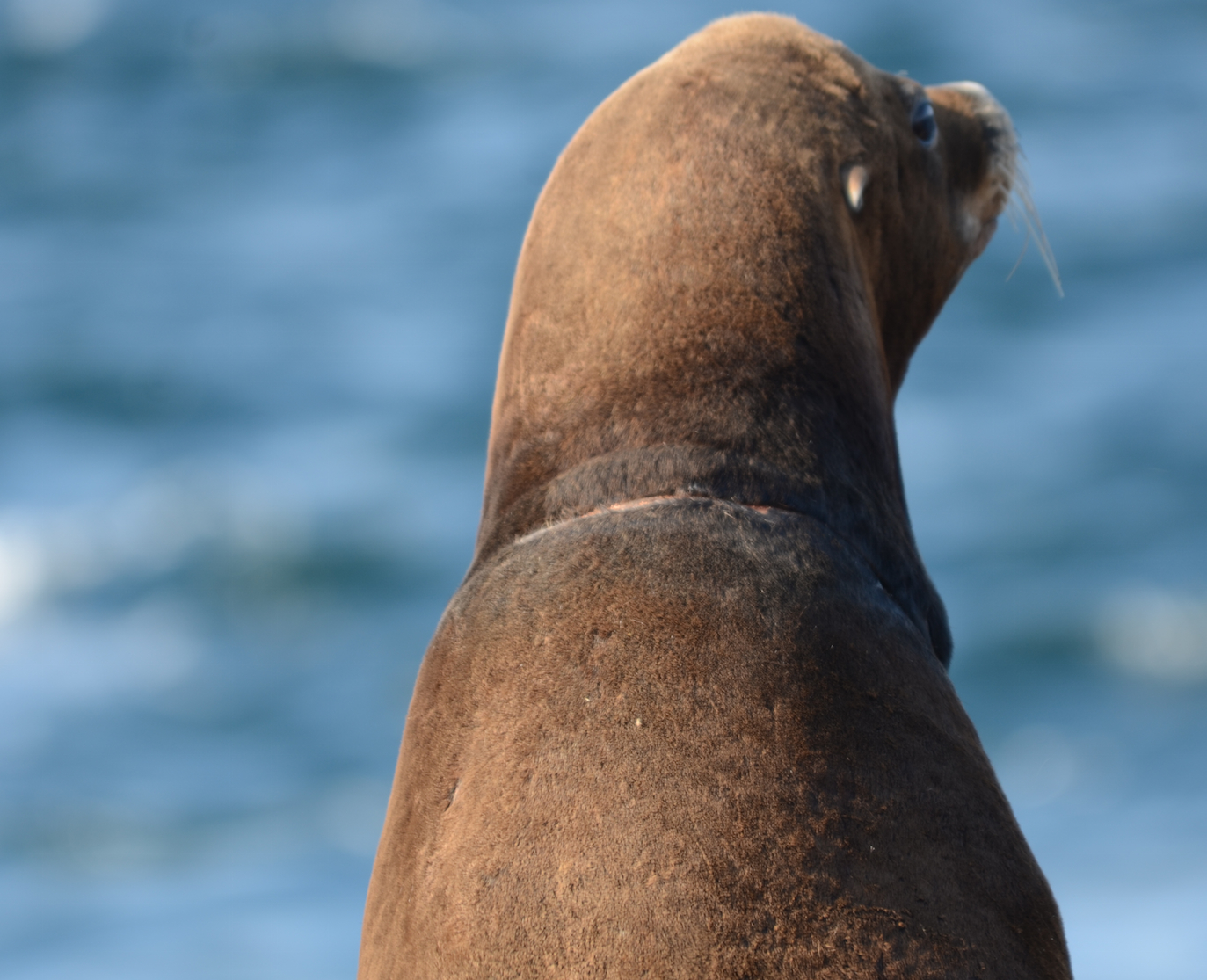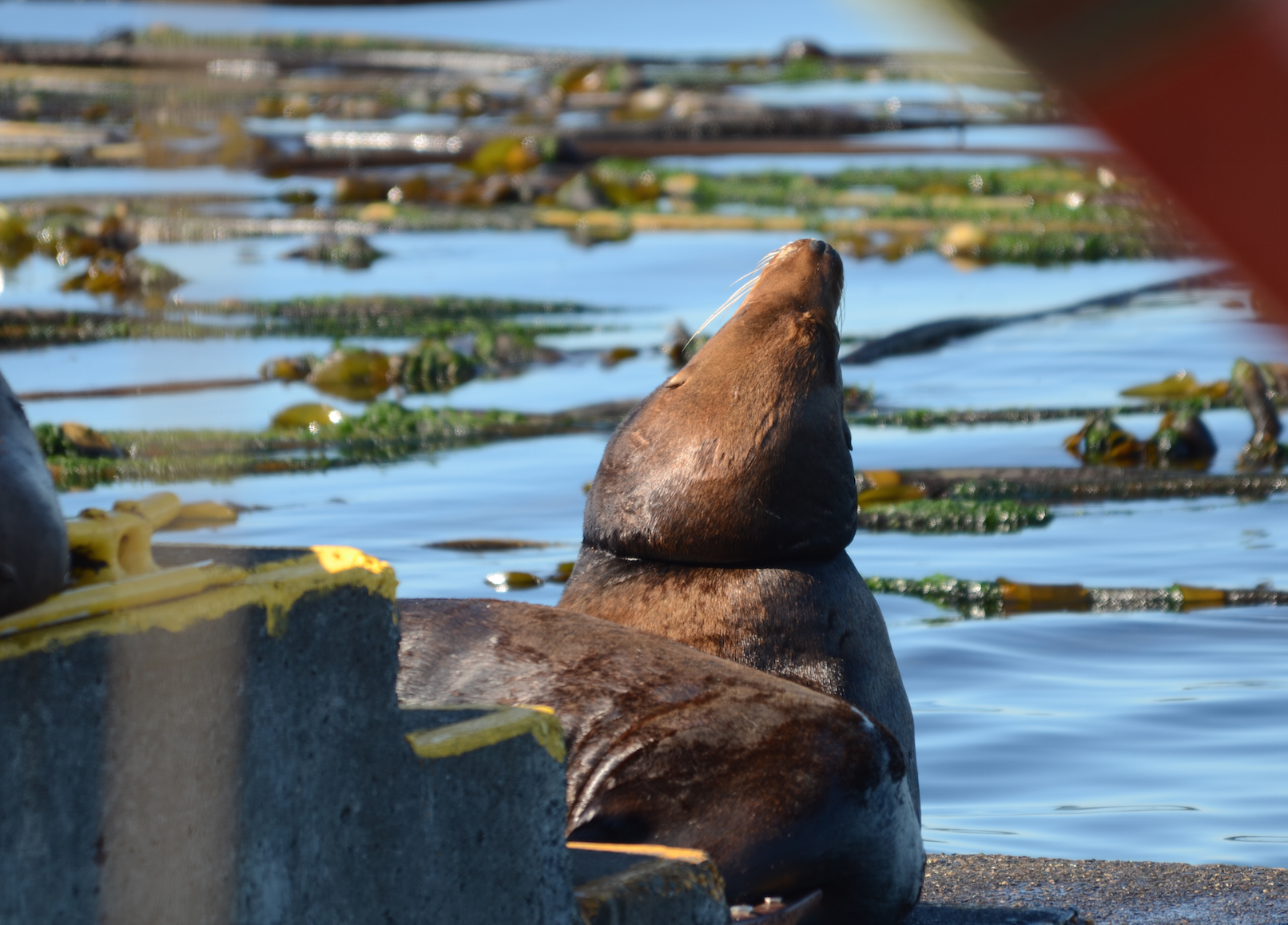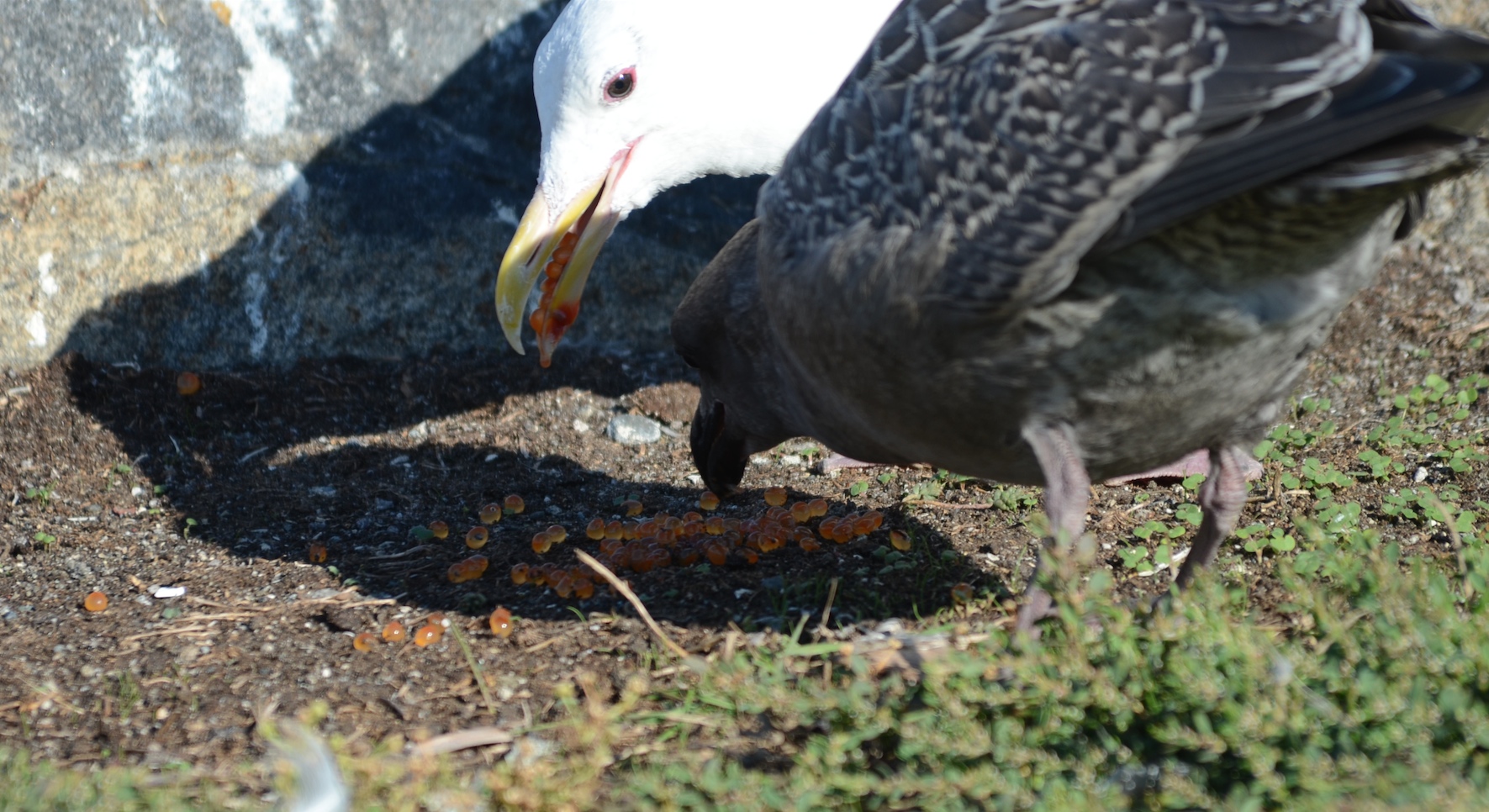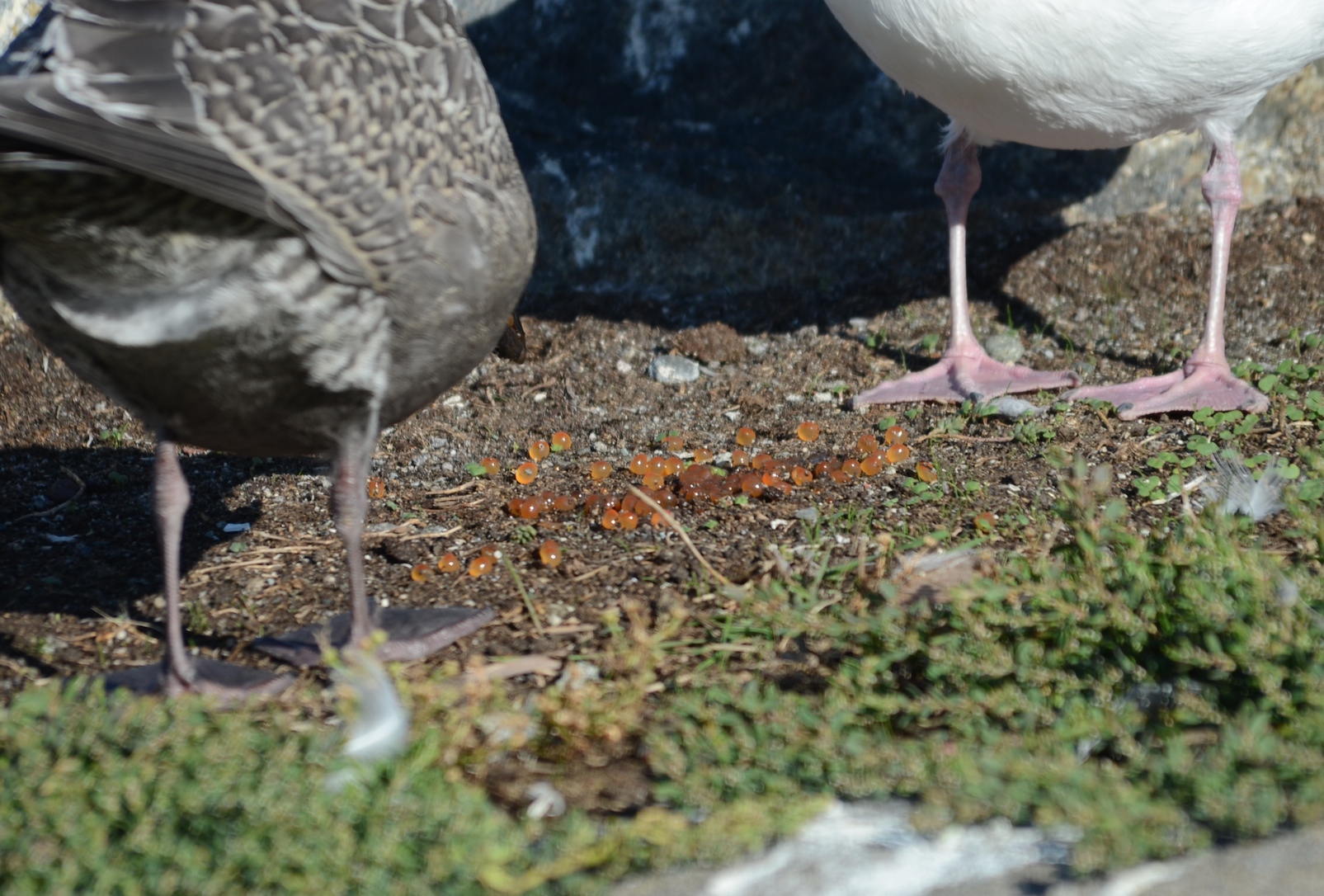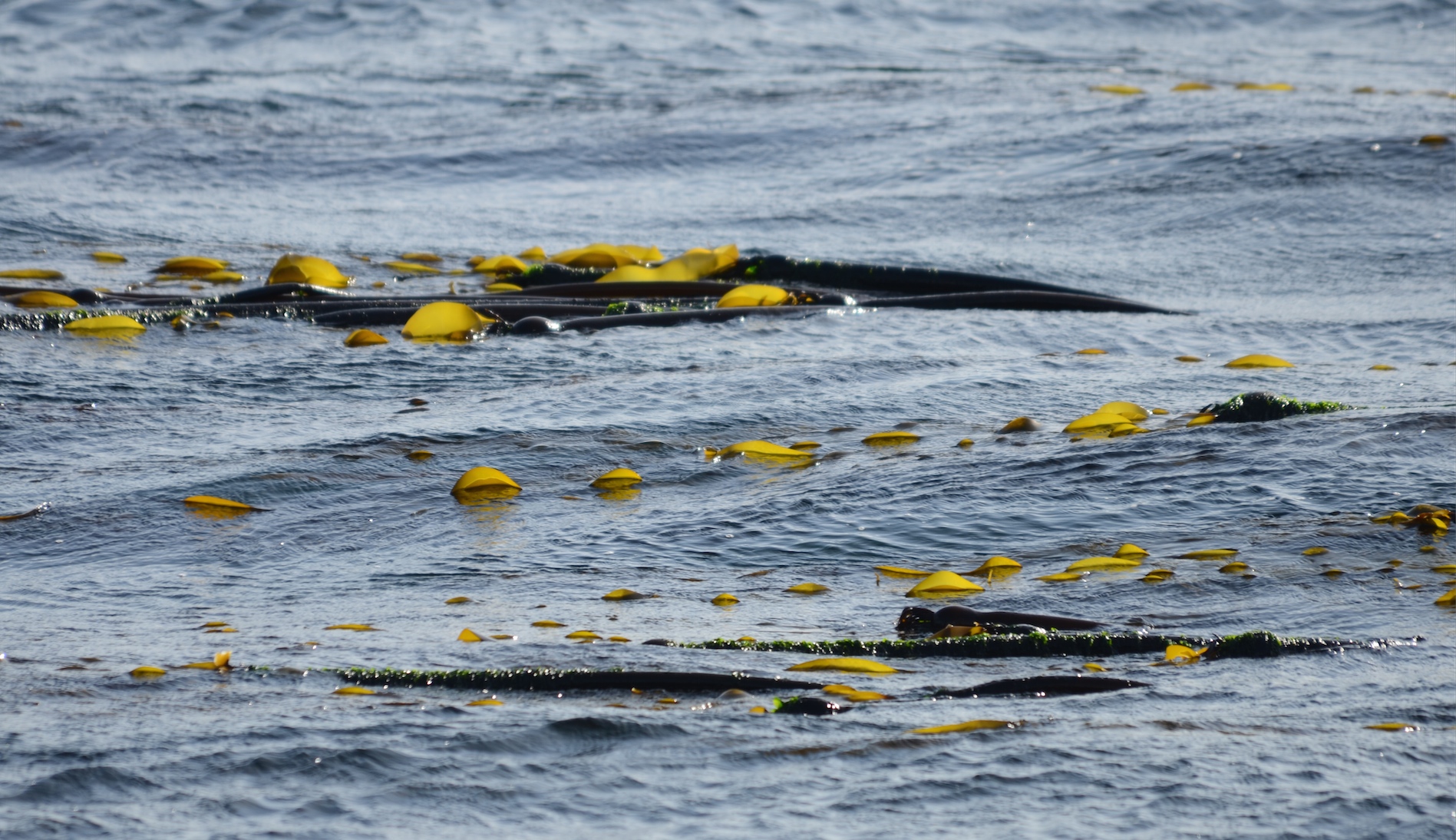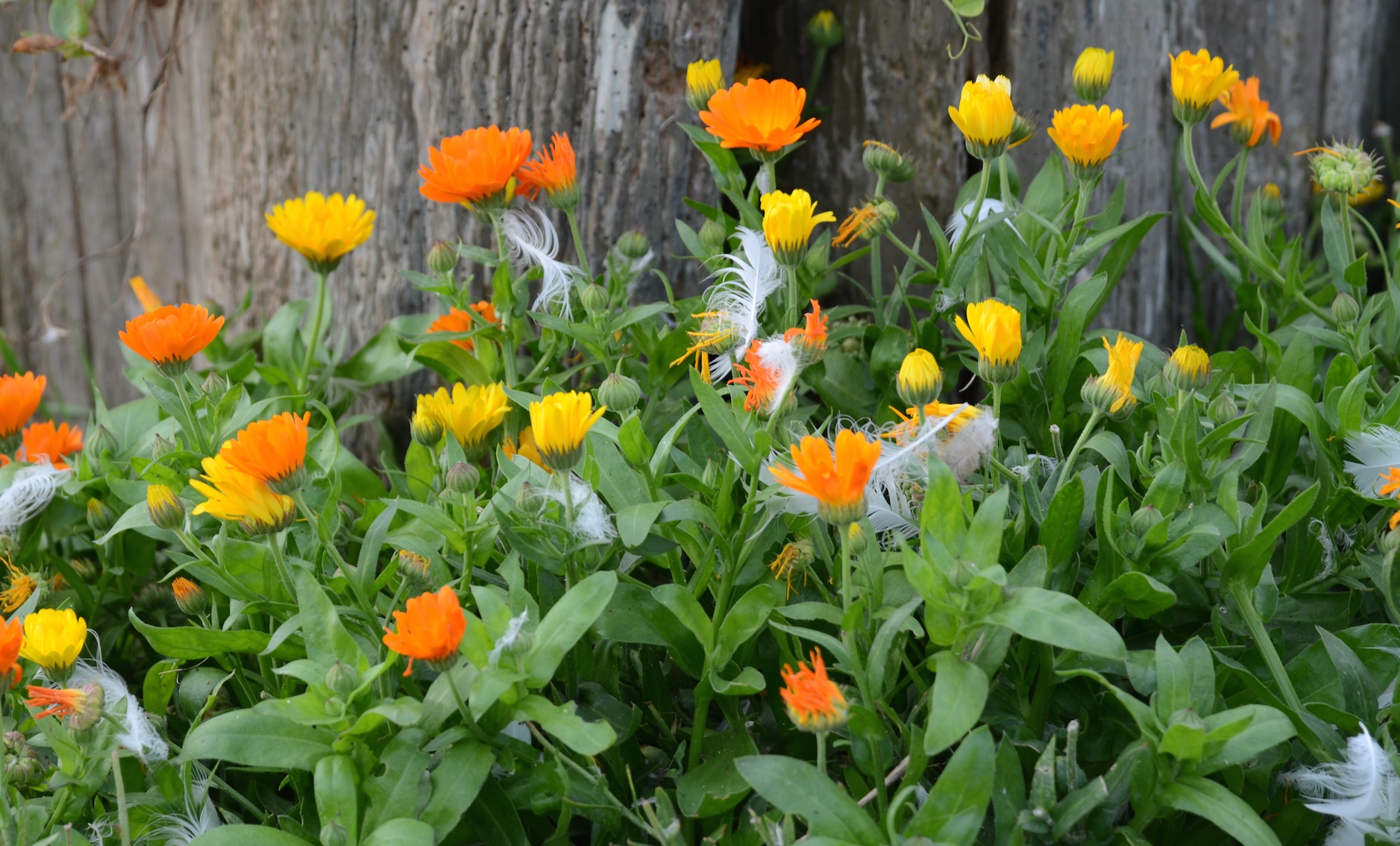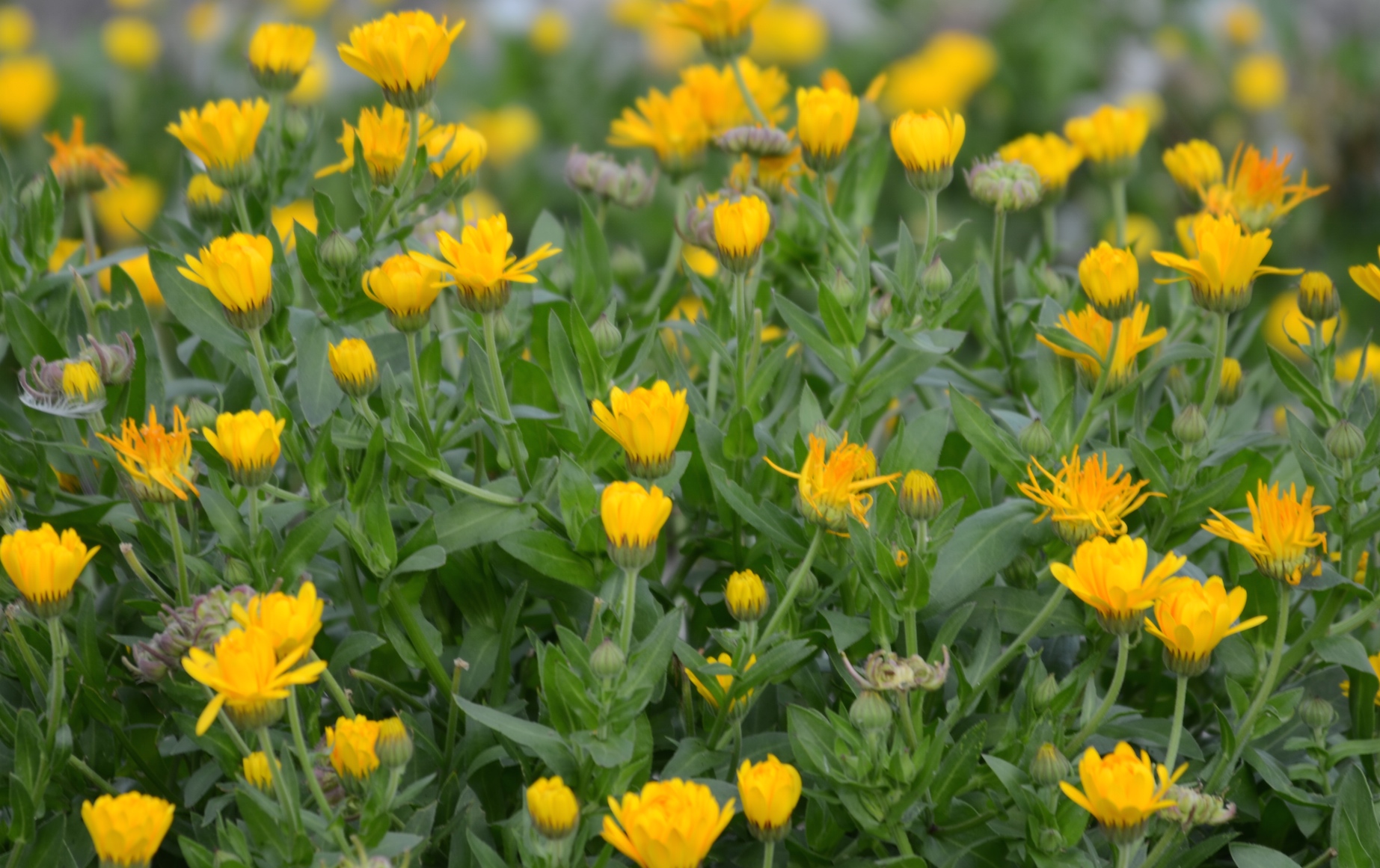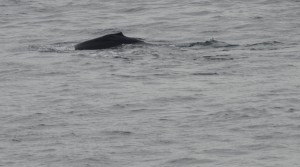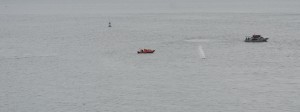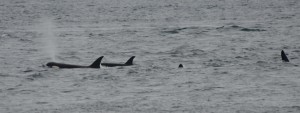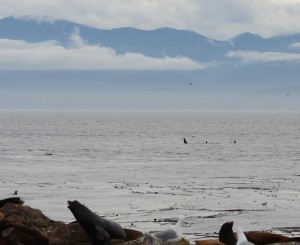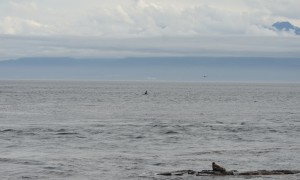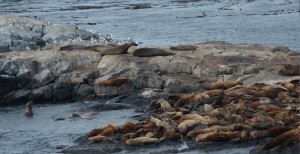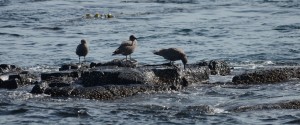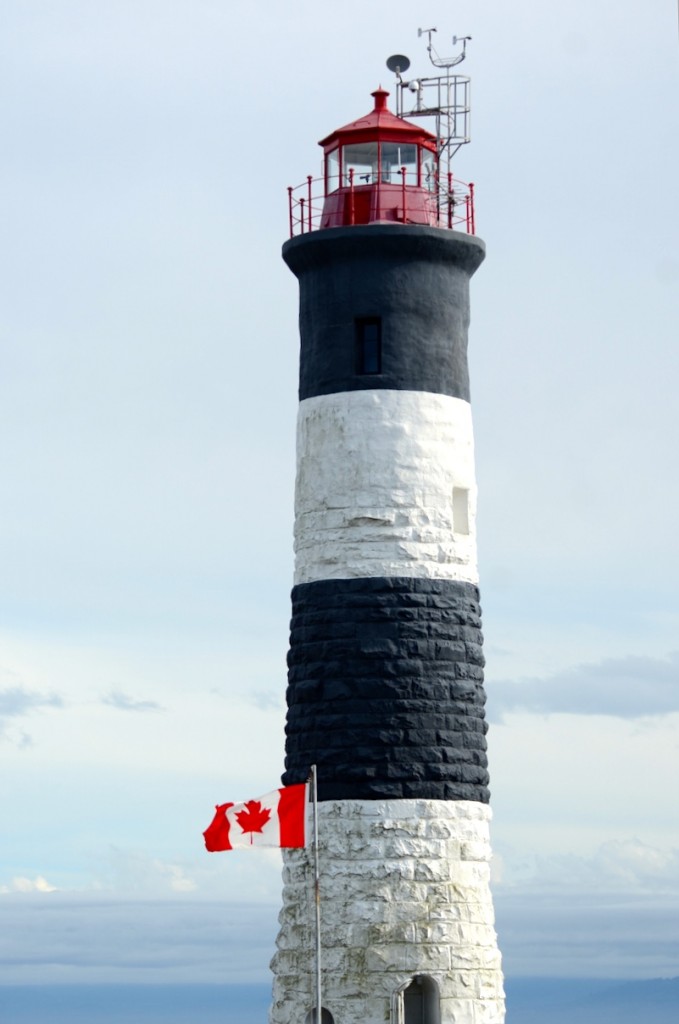The weather on Race Rocks was variable today. We started with drizzle, overcast and fog. The fog came and went until early afternoon when it cleared. The wind, which was westerly, picked up a bit in the afternoon and was still blowing 15 – 20 west, as I finished up the log after sunset. The barometer started a descent yesterday that continued today ending at 1016 hPA. This matches the forecast which is calling for showers tonight. There is also a strong wind warning in effect and overall it looks like more good weather coming.
There were 18 observed visits by whale watching boats to the Ecological Reserve today. Most of the operators work carefully, respectfully and sustainably, they slow right down on entering the reserve and go even slower when there are seals and sea lions in the water. If there are whales in the Protected Area they do not enter into the Ecological Reserve and if whale enter while they are inside they carefully and slowly leave using extreme caution to avoid interacting with the animals. They stay in the centre of Middle Channel going with the current and never try to wedge themselves between Great Race and South Islands (their insurance companies probably like this too). They are respectful of their distance to the animals and a role model for other companies and vessels on the water. In the long run, this is good for business and good for the animals. It means that this kind of commercial activity might be able to sustainably continue to use the Ecological Reserve for profit making.
Today was a day with lots promise for Southern Resident Killer Whale recovery. L-pod has another brand new calf, born sometime on or before September 5th. The significance to Race Rocks is its’ central location to this babies’ first few days of observed activities. This is the fifth Southern Resident calf born since last December and it renews hope for recovery of this very endangered population. To give you an idea of how significant this is: 1977 was the highest ever recorded year for Southern Resident calf production with nine calves born. According to the Center for Whale Research no calves survived in 2013 and 2014, so 2015 is a boon.
Killer whales and salmon are both almost iconic to our identity in this part of the world and of course they are completely linked together, especially here at Race Rocks, which is an oceanic salmon funnel, a condensed part of one of the planet’s largest salmon runs.
While celebrating this success, let’s also do more to continue their recovery by modelling more fundamentally sustainable behaviours, like using less water, eating sustainable seafood, recycling, using fewer harmful chemicals, electricity, fuel and plastic, doing shore cleanups and working for positive change through democracy. I have digressed, so back to biology: this new calf was seen with L91 (probably the mother) and has been officially named L122.
At this stage of writing the log, I looked up to see several Humpback Whales going through the Ecological Reserve from west to southeast. It looked like three animals; a very large one, (probably “Big Mama” a name used by whale watchers) and two others, one much smaller, which may have been a calf. I headed out to photograph the whales and witnessed some whale watching vessels making a bee-line for them, even though the whales were inside the Ecological Reserve. Speaking of sustainable behavior, the agreement states that if there are whales inside the reserve, the whale watching boats stay outside. Two vessels came up tight behind them and a third came in around the front of their path, the other vessels following the whales dropped off staying outside as per agreement.
The whales were in fairly shallow water between South Islands and Rosedale Reef, next to a kelp bed, so didn’t have a lot of maneuvering room with two boats behind and one in front. I went up the tower and took more photos. I totally commend the vessels that left the whales and turned to travel outside of the reserve instead of following the whales and other vessels into the Ecological Reserve.
I did a few chores and went back to writing. This time when I looked up there was a pod of Killer Whales heading into the reserve on basically the same track as the Humpbacks but a little closer to Great Race. I went back out for more photos and saw a group of about fifteen Southern Resident Killer Whales, members of L-pod according to the whale watchers. There was a little calf travelling at the back of the pack with a small adult animal, probably a female (?). Not sure if it was the newest one.
I took a lot of photos today and will share them over the next while. It was a busy day with regular chores, spotting and phtotographing the 10 Elephant Seals that have recaptured the top of Middle Rocks and are scaring off sea lions, photographing sea lion tags and brands, gulls and of course the whale shows. With all that going on it seems odd to say, there were no visitors.

